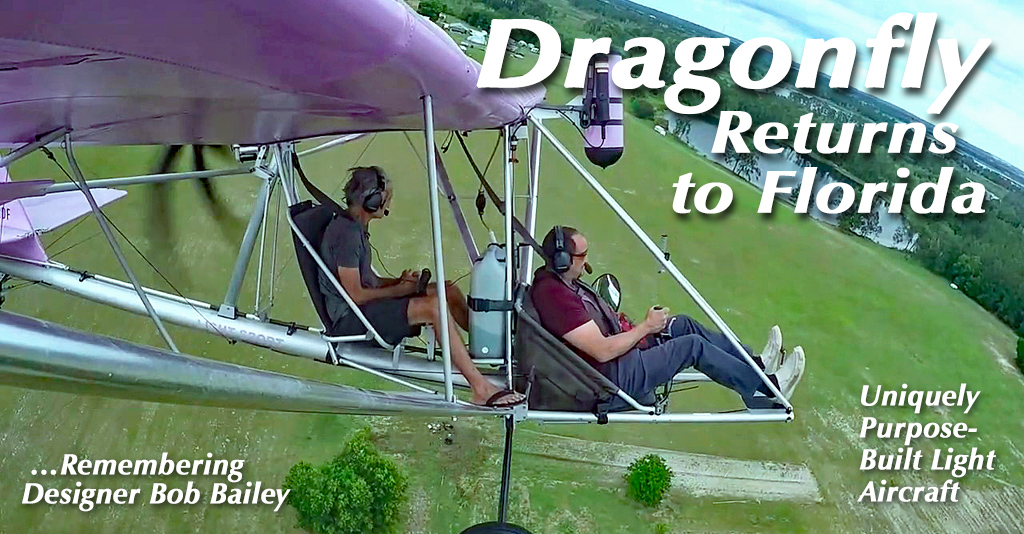
Dragonfly was born in Florida in the early 1990s. Back-of-the-napkin sketches started in the 1980s following the dynamic 1970s when hang gliding swooped into national awareness. What one designer did with Dragonfly would become one of the most celebrated developments in hang gliding. Throughout the ’70s, hang glider designs accelerated smartly in glide performance and sink rate, stretching from slope-hugging 4:1 triangular-shaped wings to elegantly long and slender “bladewings” that could exceed a 20:1 glide yet remain foot-launchable and still be an aircraft you could carry on your shoulder (when folded down). Passionate enthusiasts thrilled to a 5X performance improvement in a decade or so. In the beginning, most pilots launched off mountains to get enough height to catch thermals. Yet lots of America doesn’t have mountainous terrain. Florida had plenty of pilots eager to fly hang gliders but to find the best soaring, they had to load up their gliders and drive 10-12 hours to the hills of Tennessee where flight park operators like me catered to them with mountain launch sites.


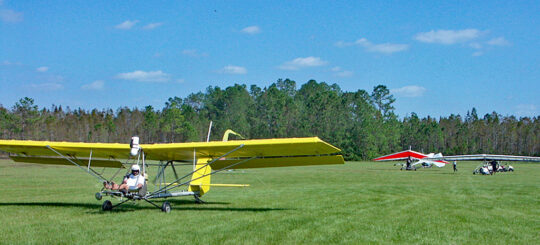 Throughout the '70s, hang glider designs accelerated smartly in glide performance and sink rate, stretching from slope-hugging 4:1 triangular-shaped wings to elegantly long and slender "bladewings" that could exceed a 20:1 glide yet remain foot-launchable and still be an aircraft you could carry on your shoulder (when folded down). Passionate enthusiasts thrilled to a 5X performance improvement in a decade or so.
Throughout the '70s, hang glider designs accelerated smartly in glide performance and sink rate, stretching from slope-hugging 4:1 triangular-shaped wings to elegantly long and slender "bladewings" that could exceed a 20:1 glide yet remain foot-launchable and still be an aircraft you could carry on your shoulder (when folded down). Passionate enthusiasts thrilled to a 5X performance improvement in a decade or so.
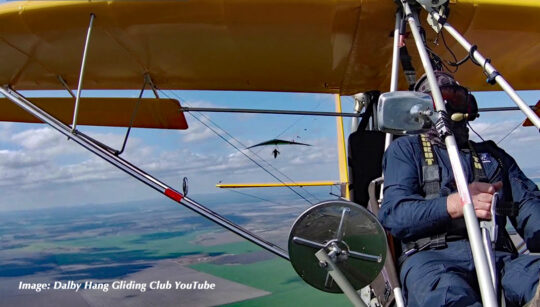 In the beginning, most pilots launched off mountains to get enough height to catch thermals. Yet lots of America doesn't have mountainous terrain. Florida had plenty of pilots eager to fly hang gliders but to find the best soaring, they had to load up their gliders and drive 10-12 hours to the hills of Tennessee where flight park operators like me catered to them with mountain launch sites. At home they did boat towing regularly but that rarely got them high enough to catch thermals. One Florida man dreamed of a solution.
In the beginning, most pilots launched off mountains to get enough height to catch thermals. Yet lots of America doesn't have mountainous terrain. Florida had plenty of pilots eager to fly hang gliders but to find the best soaring, they had to load up their gliders and drive 10-12 hours to the hills of Tennessee where flight park operators like me catered to them with mountain launch sites. At home they did boat towing regularly but that rarely got them high enough to catch thermals. One Florida man dreamed of a solution.
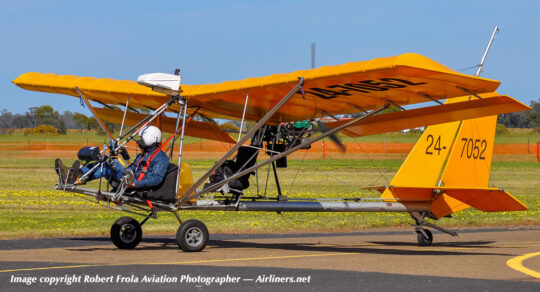
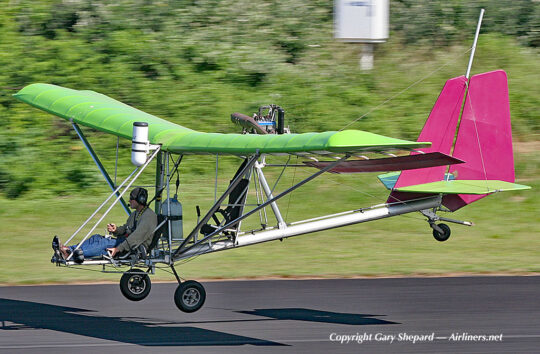
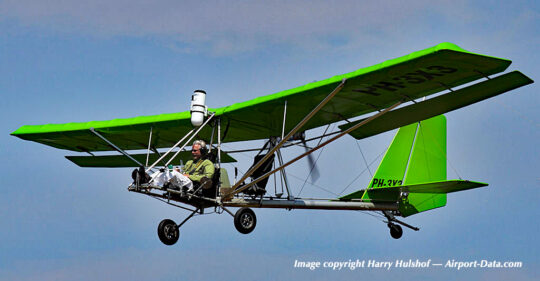
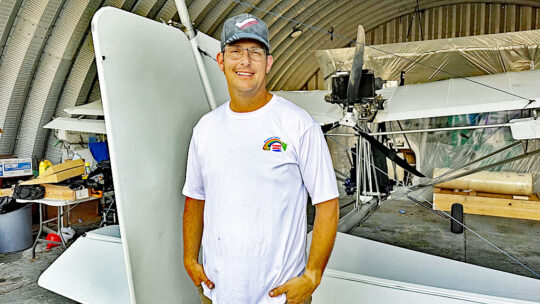 This central-northwestern area is home to fancy equestrian ranches and the spacious airport has begun to thrive from light aircraft operations. Airport manager Mike Grawe supported by industry expert Roy Beisswenger and airfield entrepreneur Troy Townsend welcomed Randy Dorsey along with another business setting up to build the former Belite Chipper 2, the latter operated by husband-and-wife team Nick and Charlotte Jones. Along with two powered parachute operations and 40 brand-new T-hangars (sorry, already fully booked), X35 looks alive and thriving.
Learn more about plans for Dragonfly back home in Florida in the video below. You can also read several articles below from my earlier reporting.
This central-northwestern area is home to fancy equestrian ranches and the spacious airport has begun to thrive from light aircraft operations. Airport manager Mike Grawe supported by industry expert Roy Beisswenger and airfield entrepreneur Troy Townsend welcomed Randy Dorsey along with another business setting up to build the former Belite Chipper 2, the latter operated by husband-and-wife team Nick and Charlotte Jones. Along with two powered parachute operations and 40 brand-new T-hangars (sorry, already fully booked), X35 looks alive and thriving.
Learn more about plans for Dragonfly back home in Florida in the video below. You can also read several articles below from my earlier reporting.
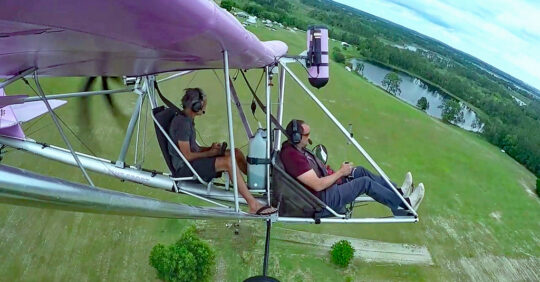 Is It Affordable?
Is It Affordable? Recorded in late April 2024, this Dragonfly update has the latest information about the ongoing manufacture of this popular aircraft.
https://youtu.be/Xio65Ma7dNo
Recorded in late April 2024, this Dragonfly update has the latest information about the ongoing manufacture of this popular aircraft.
https://youtu.be/Xio65Ma7dNo
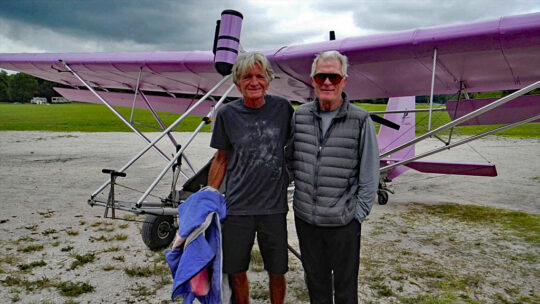 A man of highly innovative design but very few words, many knew Bobby for years yet learned little about him. He was rarely one to talk about himself in public settings. I always figured that much of the time he was designing the next aircraft in his mind.
A celebration of his life is planned for Sunday, May 26th, 2024 at 6548 Groveland Airport Rd, Groveland, FL 34736 — the airport Bobby called home for decades.
Florida and southeastern U.S. pilots who knew him can gather to share personal details and tell tall stories of Bobby's numerous flying exploits.
A man of highly innovative design but very few words, many knew Bobby for years yet learned little about him. He was rarely one to talk about himself in public settings. I always figured that much of the time he was designing the next aircraft in his mind.
A celebration of his life is planned for Sunday, May 26th, 2024 at 6548 Groveland Airport Rd, Groveland, FL 34736 — the airport Bobby called home for decades.
Florida and southeastern U.S. pilots who knew him can gather to share personal details and tell tall stories of Bobby's numerous flying exploits. 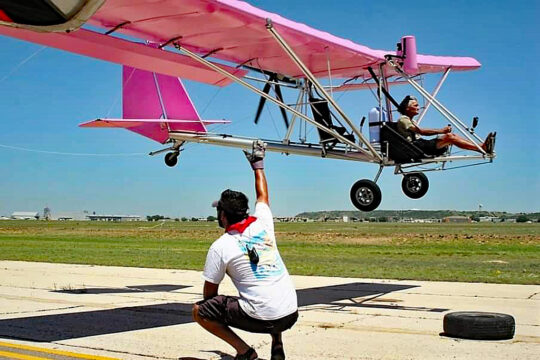
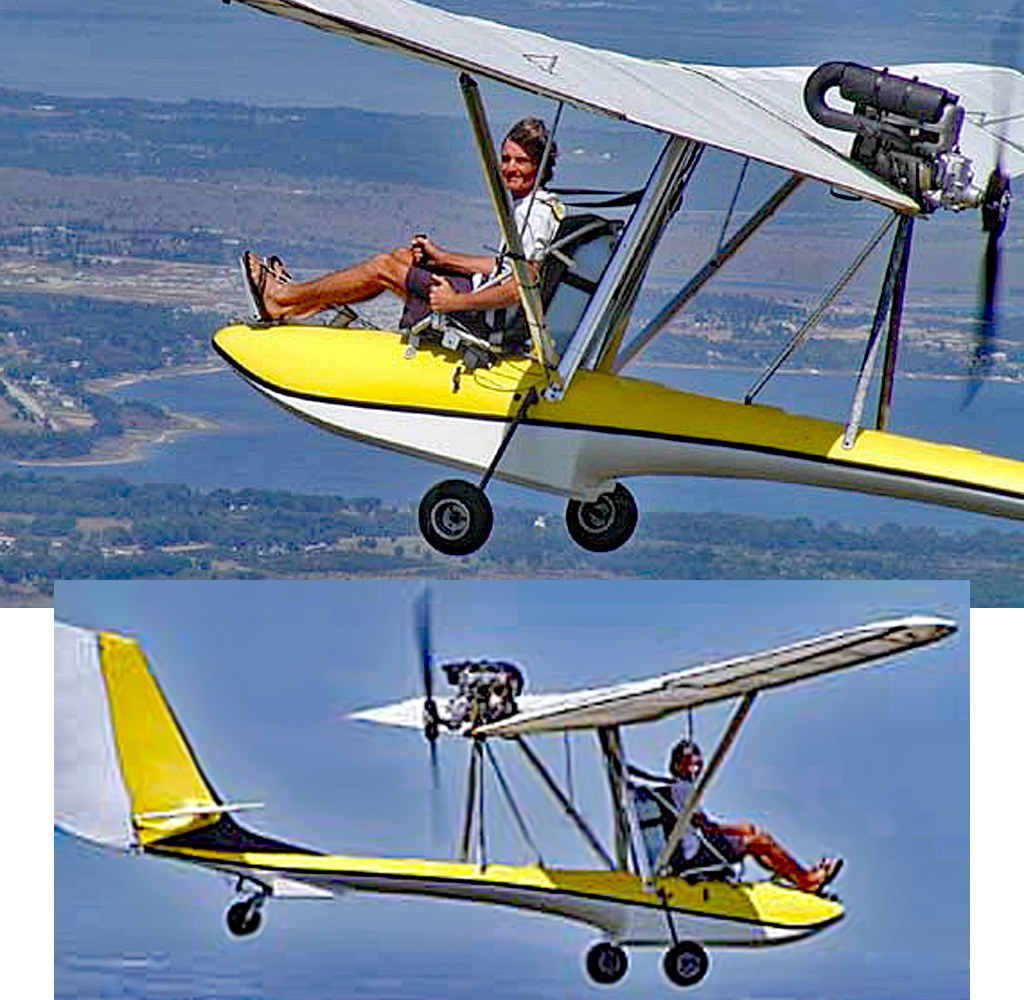
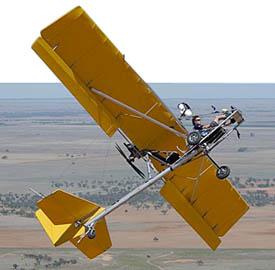 A most remarkable thing happened recently. No, I don't mean the sudden resignation of EAA president Rod Hightower. I refer to a recent (September 27, 2012) approval of a brand new Special LSA. Why is that noteworthy, especially as it is #128 on our
A most remarkable thing happened recently. No, I don't mean the sudden resignation of EAA president Rod Hightower. I refer to a recent (September 27, 2012) approval of a brand new Special LSA. Why is that noteworthy, especially as it is #128 on our 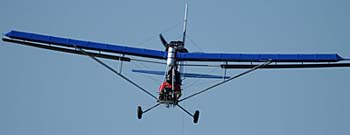 Nonetheless, Ed Pitman of
Nonetheless, Ed Pitman of 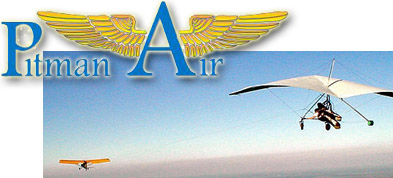 "I worked on this for 22 months to make it happen," explained Ed. "I went to Australia [where the design is now owned] for a month in March this year to insure they had their paperwork and processes in order. I advised Bill Moyes in the beginning that because of the bilateral agreement between U.S. and Australia he could run everything from Sydney, but he chose to have me represent America for the Dragonfly." Thus, Pitman Air is the official manufacturer of the Dragonfly SLSA and ELSA Kits. Americans can still buy Experimental Amateur Built kits directly from Australia but they cannot tow hang gliders or teach in these machines. According to FAR 91.327 the SLSA models can be used for "Compensation or Hire" for both aero towing and flight training. However, Ed reports he is working to obtain a waiver from
"I worked on this for 22 months to make it happen," explained Ed. "I went to Australia [where the design is now owned] for a month in March this year to insure they had their paperwork and processes in order. I advised Bill Moyes in the beginning that because of the bilateral agreement between U.S. and Australia he could run everything from Sydney, but he chose to have me represent America for the Dragonfly." Thus, Pitman Air is the official manufacturer of the Dragonfly SLSA and ELSA Kits. Americans can still buy Experimental Amateur Built kits directly from Australia but they cannot tow hang gliders or teach in these machines. According to FAR 91.327 the SLSA models can be used for "Compensation or Hire" for both aero towing and flight training. However, Ed reports he is working to obtain a waiver from 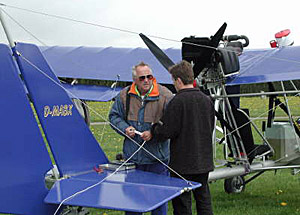 Presently Pitman Air offers the 65-hp Rotax 582-powered Dragonfly but Ed reported that
Presently Pitman Air offers the 65-hp Rotax 582-powered Dragonfly but Ed reported that 